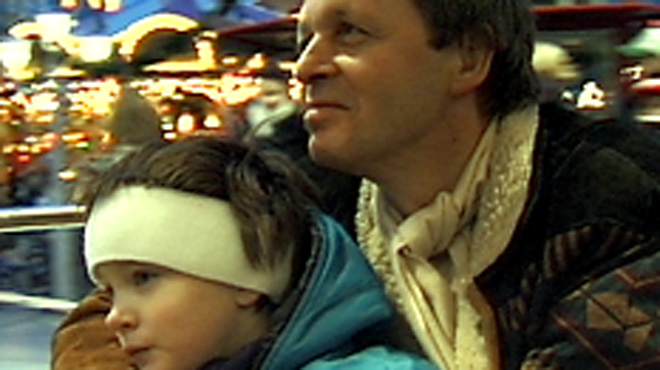
Independent Lens
AWARE: Glimpses of Consciousness
What begins as a science film emerges far beyond the explicable. AWARE follows six brilliant researchers approaching consciousness from different perspectives.
Ten years after the fall of the Berlin Wall, After the Fall searches for traces of this monolith within the people who lived in its shadow.

Eric Black is a photographer and documentary filmmaker based in San Francisco and Berlin, Germany. His films as director/producer/cinematographer (also with Frauke Sandig) include Heart of Sky, Heart of Earth, Frozen Angels, and After the Fall–all three were official selections in over 200 international film festivals.
.jpeg)
Frauke Sandig is a documentary filmmaker based in Berlin. She works as a commissioning editor for Deutsche Welle. Her films as director/producer/dramaturgist (also with Eric Black) are Heart of Sky, Heart of Earth (2011), Frozen Angels (Sundance 2005), and After the Fall (Berlin IFF 2000).
Learn more about funding opportunities with ITVS.
After the Fall is a haunting documentary about one of the most powerful icons of the 20th century: the Berlin Wall. The program examines the effects of the Wall on the Berlin citizens who lived in its shadow for 28 years. The beautiful photography, shot mostly at dawn and dusk within one kilometer of the site of the Berlin Wall, depicts the changing face of Berlin, with its many new construction projects and access routes. After the Fall also features archival footage and interviews with both East and West Berliners about their daily lives since the collapse of the concrete structure that once separated them.
August 13, 2001 marks the 40th anniversary of the building of the wall. One decade has passed since German reunification, and virtually nothing of the Wall separating East and West Germany remains. How could this important physical evidence of the Cold War completely disappear? With 50,000 new buildings under development in the past decade, Berlin is poised to become an important economic and political capital in Europe. The former death strip - the barren land between the two parts of the Wall - is now Europe's largest construction sight, swarming with mechanical cranes and scavenging birds. After the Fall tells the tale of Berlin's transformation through the stories of the people who live there.
Among those interviewed in After the Fall is Winfried Prem, a philosophical demolition contractor whose "crusher" machine reduced two-thirds of the 160-kilometer-long Berlin Wall to gravel. Prem's moxie and opportunistic instinct motivated him to approach the East German government with his services soon after the opening of the border between East and West. And yet, he seems sentimental about the destruction of the Wall, despite the fact that it provided him with much-needed work. He reveals his amazement at the changes taking place in Berlin as he talks about playing his accordion for border guards in the death strip before the demonstration of his crushing machine.
Each person in After the Fall has a unique relationship to the Wall, and often dreams play a role in the memories of the structure that dominated the Berlin landscape. Citizens recall dreams of dogs barking and rifle shots fired. One woman remembers dreams of flying over the Berlin Wall. Though happy that the Wall no longer isolates them, many East Berliners feel that East German culture is being erased or subsumed by West German culture. The division between East and West Germany turns out to be far greater than the physical dimensions of the Wall.
Gone is the Wall between communism and capitalism, but not the conflict. In After the Fall, the camera searches for the Wall's traces and its psychological impact on those who lived in a divided Berlin. A reverend, whose church was destroyed 1987 just before the Wall was dismantled, struggled to save the only section of intact Wall currently in its original location. A former Stasi captain plays himself on a movie set in front of a Styrofoam re-creation of the Wall. After the first euphoria of reunification, two sisters who were separated by the Wall for 28 years discover that they aren't any closer now than when they were physically kept apart. The wall may have disappeared, but its effects linger in the minds and hearts of the people of Berlin.
We’ll send you funding deadlines, events, and film news.
Connect with us now at itvs@itvs.org.